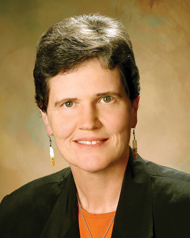View from the Administrator: Diverting Youth from the Juvenile Justice System
By Pamela S. Hyde, J.D., SAMHSA Administrator
Young people who enter the juvenile justice system often have multiple problems.
According to a study by the National Center for Mental Health and Juvenile Justice  , most youth in the juvenile justice system also have a substance use disorder, mental disorder, or both. Almost 30 percent of those youth have problems so severe their ability to function is impaired.
, most youth in the juvenile justice system also have a substance use disorder, mental disorder, or both. Almost 30 percent of those youth have problems so severe their ability to function is impaired.

Yet very few get the treatment they need. In fact, in some locales, detention centers and jails have become the de facto treatment centers. That's just not right. We need to get these young people into treatment, not into incarceration. Better yet, we need to make sure they never get into the juvenile justice system to begin with.
That's what SAMHSA's juvenile justice-related programs do—divert young people who have committed offenses away from the juvenile and criminal justice systems and into substance use treatment.
The Juvenile Treatment Drug Court program, for example, helps expand and enhance substance use treatment services in problem-solving courts that identify substance-using offenders and place them under strict court monitoring and community supervision. (SAMHSA's Adult Treatment Drug Courts program does the same for adults, offering non-violent offenders a chance to get alcohol or drug treatment instead of jail time.)
SAMHSA is also collaborating with the Office of Juvenile Justice and Delinquency Prevention  (OJJDP) at the U.S. Department of Justice in an even more intensive diversion program called Reclaiming Futures
(OJJDP) at the U.S. Department of Justice in an even more intensive diversion program called Reclaiming Futures  . With this initiative, SAMHSA supports the provision of behavioral health services for participants in treatment drug courts established by OJJDP.
. With this initiative, SAMHSA supports the provision of behavioral health services for participants in treatment drug courts established by OJJDP.
SAMHSA's new Teen Court Program, which announced its first round of grantees in September, helps ensure that young people stay out of the juvenile justice system in the first place. The program supports courts in which young people sentence peers with such punishments as community service or written apologies for minor, first-time offenses. With SAMHSA's support, these grantees will be able to offer substance use referrals and treatment as well.
These programs work. An evaluation has found that Reclaiming Futures and SAMHSA's Juvenile Treatment Drug Court programs have led to increases in abstinence, decreases in emotional problems, and reductions in crime. (See Drug Treatment Courts Offer Hope for Youth .) That's good news for both public health and public safety.
-- Pamela S. Hyde, J.D.
For more information, visit Youth Trauma and Justice Resources.